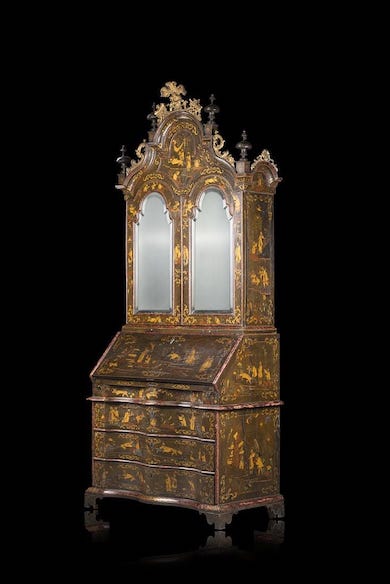
NEW YORK — Traveling to faraway places for pleasure is so commonplace now that it can be hard to imagine a time when it wasn’t the case. In the 17th and 18th centuries, most people could not dream of visiting another country, but, as the West began openly trading with China, Westerners developed a keen fascination with the distant nation. European designers and tastemakers fueled this desire for all things Chinese. They created a style of decoration called chinoiserie, which derives from the French word “chinois,” for Chinese, as it was evocative of Asian art. (“Chinoiserie” is pronounced “shin-WAH-suh-ree.”)


